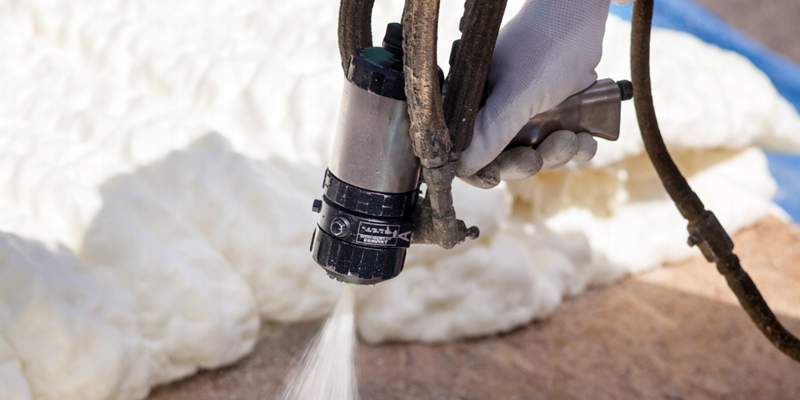Porous spray-coated polyurethane foams (SPF) are widely used for thermal insulation, sound insulation and lightweight construction materials. The production and performance of SPF can be optimized by adding catalysts such as MXC-37 (2-[2- (dimethylamino) ethoxy] ethanol, DMAEE). Such catalysts are relatively effective in addressing challenges such as amine odor and in balancing reactivity in formulations with high water content.
1. Role of MXC-37 in SPFs
MXC-37 can be used as the main or co-catalyst to enhance the foaming and curing process:
Reduced amine taste: One of the most significant advantages of MXC-37 is its ability to minimize the typical amine taste in the finished product. The active hydrogen in its structure is incorporated into the polymer matrix, reducing the residual volatile amines.
High water compatibility: MXC-37 exhibits high catalytic activity in water-based formulations, making it a wide choice for porous foam systems that use water as the fowing agent.
Flexible use: it can be used as the main catalyst alone, or with BDMAEE (bis [2- (dimethylamino) ethyl] ether) and other tertiary amines as cocatalysts to reduce the demand for BDMAEE and improve cost efficiency.
2. Advantages in SPF Production
MXC-37 can be used as the main or co-catalyst to enhance the foaming and curing process:
Reduced amine taste: One of the most significant advantages of MXC-37 is its ability to minimize the typical amine taste in the finished product. The active hydrogen in its structure is incorporated into the polymer matrix, reducing the residual volatile amines.
High water compatibility: MXC-37 exhibits high catalytic activity in water-based formulations, making it a wide choice for porous foam systems that use water as the fowing agent.
Flexible use: it can be used as the main catalyst alone, or with BDMAEE (bis [2- (dimethylamino) ethyl] ether) and other tertiary amines as cocatalysts to reduce the demand for BDMAEE and improve cost efficiency.
3. Key Applications of Porous SPFs
Porous SPFs catalyzed by MXC-37 find applications in various fields:
Thermal Insulation: Used in building walls, roofs, and industrial pipelines to enhance energy efficiency.
Soundproofing: The open-cell structure of porous SPFs absorbs sound waves, making them suitable for acoustic insulation in residential and commercial spaces.
Lightweight Fillers: Porous SPFs are used in lightweight construction materials, reducing the overall weight without compromising strength.
Packaging Materials: Their shock-absorbing properties make them ideal for protective packaging.
4. MXC-37 as a Cocatalyst
When used alongside BDMAEE or other amine catalysts, MXC-37 provides:
Enhanced Reactivity Control: Balances the foaming and gel reactions, ensuring uniform foam quality.
Reduced Catalyst Dosage: Lowers the need for higher concentrations of BDMAEE, resulting in cost savings and reduced emissions.
Customizable Performance: Allows fine-tuning of the catalyst system for specific processing conditions and performance requirements.
Why Choose MXC-37 for SPFs?
1. Odor Reduction: Minimizes amine odors in the final product, improving user experience.
2. Versatility: Suitable for both open-cell and closed-cell foam systems.
3. Eco-Friendly: Aligns with low-VOC and low-emission standards.
4. Cost-Efficiency: Reduces reliance on more expensive or odorous catalysts like BDMAEE.
5. Improved Foam Quality: Ensures consistent cell structure, high porosity, and strong adhesion.
By incorporating MXC-37 into porous spray polyurethane foam systems, manufacturers can produce high-quality, eco-friendly foams with reduced odors and improved performance, meeting the demands of modern insulation and construction industries.
Post time: Nov-19-2024

